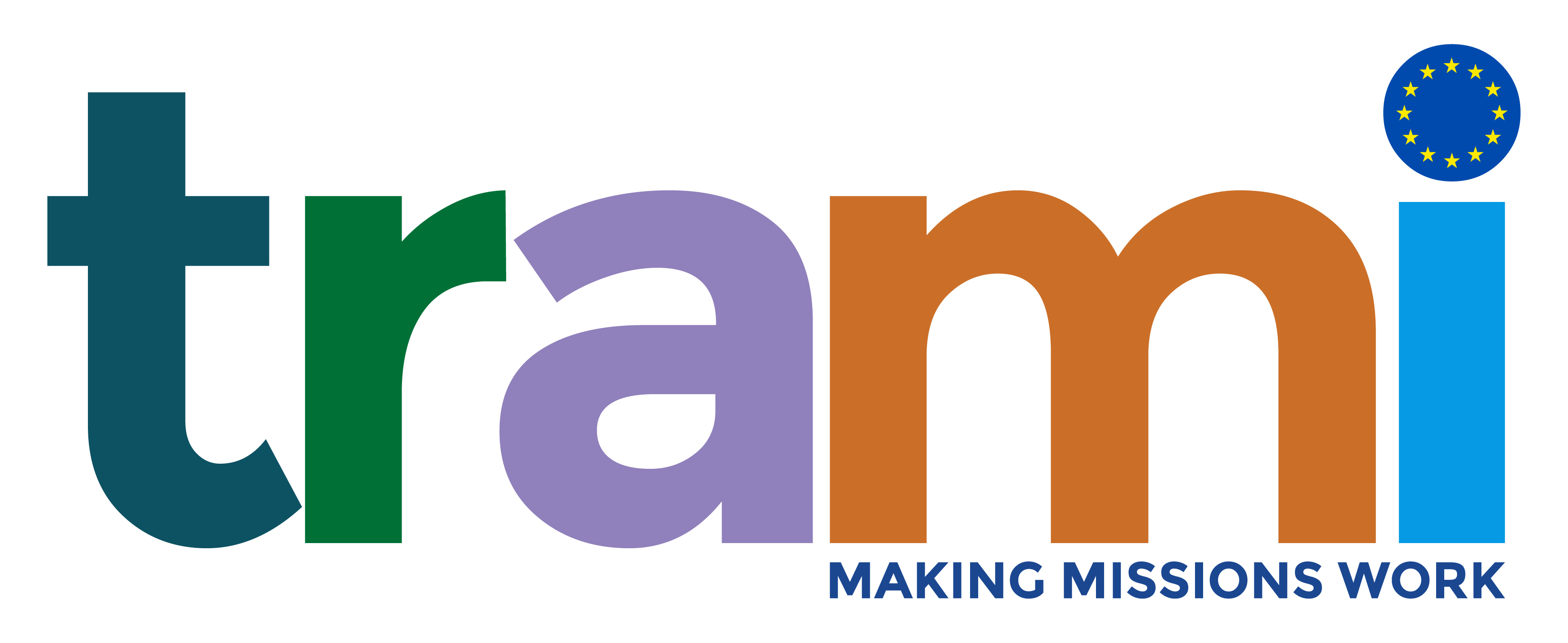Report on the fourth Mutual Learning Event - national event in Slovakia
EU Missions roundtable
ORGANISERS: Slovak Centre of Scientific and Technical Information (CVTI SR) and the Ministry of Education, Science, Research and Sport of the Slovak Republic
VENUE: Lamačská cesta 8/A, 840 05 Bratislava, Slovakia
DATE: 13 April 2023
Introduction
CVTI SR as the TRAMI member ran a mutual learning event (MLE) to highlight the essence of the missions initiatives, explore their characteristics and constraints.
Objectives of event
The objective was to examine how to integrate missions into national policies, strategies, plans and how to overcome the identified stumbling blocks of the missions’ advancement.
Attendees
There were 19 participants taking part in the event, representing governing bodies (including political level) of national and local level, science and higher education sector, research performing organisation.
Methodology
The event took the format of presentations followed by a group discussion in the form of roundtable.
Presenters:
-
Anna Krivjanská, CVTI SR, gave an overview of the TRAMI project and its objectives along with outlining the 5 EU missions
-
Monika Brečková, CVTI SR, presented the Cancer mission
-
Nataša Hurtová, CVTI SR provided an outline of Soil and Oceans and Waters Missions
-
Miroslava Tužinská, CVTI SR spoke about Climate-Neutral & Smart Cities Mission and Climate Adaptation Mission
After the presentations the participants discussed the implementation of EU missions at the national level, trying to come up with the suggestions and recommendations. The discussion was structured by the following questions:
What has already been done and what is planned in the area of the implementation of missions in Slovakia within your department/your area of responsibility?
What do you think needs to be improved/enabled in order to realize the goals of the individual missions?
What are the barriers in this process?
Discussion
During the discussion experts have addressed several issues: EU missions are perceived as an abstract term, though there is enough finances the problem is lack of people/experts – therefore there is a need to build a personnel infrastructure. Implementing the biomonitoring is also a necessity – but this again calls for staff and technical infrastructure. One of the mission, i.e. cancer, is not a priority for the Slovak government and this position in the national political agenda implies a budgetary problem; lack of clearly defined national priorities poses a problem (refers not only to cancer mission). Also the matter of funding requires some intervention – e.g. Košice city has been selected for the Mission Cities. But now they need to declare how the city achieves climate neutrality by 2030 and here’s where they need help, not having either finances nor experts; the energy management in particular poses the greatest challenge.
Another challenge is an issue of competence. Missions belong from the point of competences to several ministries; thus cooperation between these ministries is crucial: the Ministry of Environment has introduced the working group for the Climate Adaptation Mission and the Government office of the Slovak Republic has presented the vision of sectoral platforms, interlinking all ministries, research institutions and other important stakeholders. The missions represent a good example on how to jointly work on defined priorities, without fragmentation.
There’s a bunch of particular activities to bolster the missions’ implementation, e.g. one of the ministries has already started to develop a concept of Soil - carbon and water bank of the country with an aim to help protect the soil. Another important initiative dedicated to water is the Bioeast initiative, where ministries of Central and East Europe are involved with a joint aim to decrease the gap between CEE and the Western European countries in circular bioeconomy and environmental sustainability. They also develop the agenda for an agricultural knowledge system.
As it comes to visibility and awareness-rising the governmental authorities prepare a new strategy, including also a communication strategy towards the wide public.
Another helpful measure would be the Mapping of situation in other countries, including the results possibly implementable (a suggestion to use the results of the TRAMI mapping exercise, once they might be published).
One cannot forget about regions as important actors of the EU missions process. Originally missions were perceived as related only to R&I. However to successfully carry them out one needs also involve cities and towns. In order to do so it’s crucial to provide these actors with all the necessary information, and to train them how to get involved in the process.
Summary of the conclusions and recommendations
- the bottom-up approach is necessary
- to enhance interconnection and cooperation of researchers and research institutions
- to strengthen coordination of EU missions on national level – a suggestion to create a national platform/national hub for EU Missions
- a financial support from the state is crucial, when structural funds projects are over, there will be no other source of financing missions-related activities
- the idea of a coordination platform for the cancer Mission welcomes, with the caveat it should be operated by the Ministry of Health
- to be done: mapping of readiness level for the mission's implementation (as done in Czechia)
- a clear management structure
- an exchange of information
- an elaboration of the National implementation plan with clear tasks and competences
- the clear need to constantly educate the wide public
- Log in to post comments

